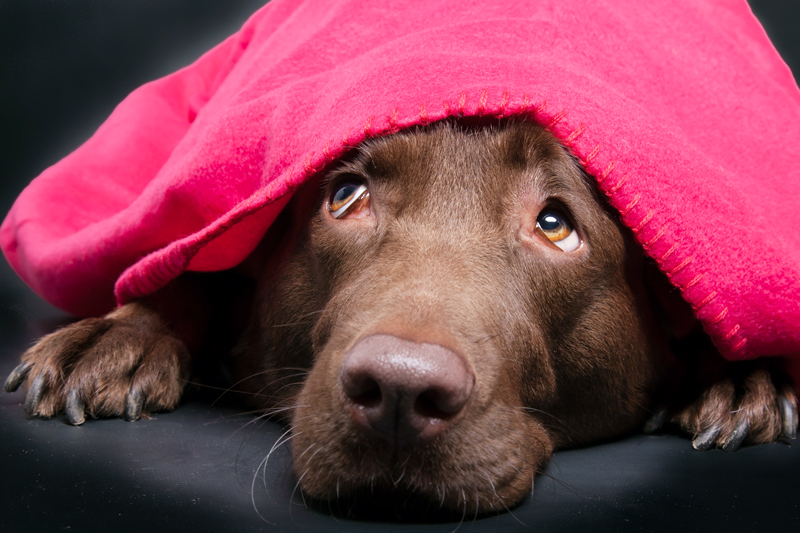It’s that time of year – the daylight is getting shorter (though I somehow ended up with an extra hour on call when the clocks went back, for the second year running), the relentless summer heatwave burned itself out and, with bouts of snow at the weekend, winter seems to have appeared from nowhere.
In the veterinary world, this means impaction colics, a smattering of calvings and, of course, Bonfire Night.
We’ve seen a handful of clients over the last couple of weeks asking about medications or sedation for Bonfire Night, which is to be expected.
Too little, too late?
The frustrating thing is, for many dogs that get anxious at this time of year, the first day of November is too late to start making a real difference. While the sedative or anxiety medications may only need to be given on the day of the dreaded fireworks, there are many other, longer-term things clients can do to make this time of year less stressful for their pets.
Additionally, Bonfire Night is rarely just one night any more, with many displays happening on several days around the fifth – and it isn’t ideal to be doping pets up every night for a week.
While it’s ultimately up to owners to take responsibility for their pet’s welfare, and not to leave it until Friday afternoon to try to squeeze in an appointment for “emergency sedatives”, as vets we need to provide advice and guidance to encourage our clients to come to us earlier.
Seasonal thinking
It would be fair to say most vets offer seasonal advice, be that through displays in the practice, newsletters, or through the website – but I think many of us could be doing it better. In particular, the use of social media is paramount to target a wide client base, and we should be setting ourselves reminders each year to start seasonal campaigns early to have maximum impact.
A great example of this is one of the ectoparasiticide manufacturers that sent Christmas cards in June to veterinary practitioners.
While this initially caused mass confusion, I think it was an ingenious advertising ploy – it was different, caught everyone’s attention and begged the question, why on earth have they done that? The answer: to demonstrate their product works for six months (until Christmas).
Early adopters

I think we have something to learn from this. Perhaps a firework-themed Facebook post in June wouldn’t go amiss, with the aim of encouraging starting desensitisation then, rather than three days before the scary noises start.
It could be beneficial to send out reminders running up to the event itself – something a month in advance, for example, to suggest the purchase of pheromone products for the home or trial nutraceuticals. Then, a few weeks beforehand, a final reminder to book your appointment if any prescription medications are needed to avoid that “day before” rush.
At regular practice meetings, seasonal campaigns should be on the agenda so everyone is on the same page with the advice they’re giving out.
Last year, I was TB testing four days a week so never encountered the “Bonfire Night consult” and, when faced with my first one this year, had a quick scramble around for ideas from my colleagues as to what the recommendations should be. A few days later we had a discussion about all the options at a vet meeting, but it definitely would have been helpful to be prepared a bit earlier.
Social engagement
Sometimes it feels like we’re playing catch up with seasonal clinical problems – but why should we? We know these things happen every year, so we should aim to be more prepared and, most importantly, evolve and adapt to the changing times.
Gone are the days when the extent of our marketing is on the practice noticeboard in the waiting room. We should be maximising our use of social media and using them fully to our advantage:
- Run a Facebook competition to encourage sharing of the posts.
- Ask clients to add pictures of their pets.
- Don’t forget the other platforms, such as Instagram, Snapchat and Twitter.
Forward thinking
Interacting and engaging with your clients through preventive campaigns will improve the welfare of far more pets than waiting for them to walk through the door when they already have a shaking, nervous wreck of a dog, expecting you to wave your magic wand.
I hate fireworks just as much as my cats and quite fancy the idea of making a den for the lot of us to hide in at the weekend – maybe I need some desensitisation training, too…

Leave a Reply